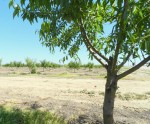
Almost anyone who reflects a minute or two can see California groundwater law is based on an absurd assumption. Essentially, the law says groundwater belongs to the owner of the land above it.
Once it’s acknowledged that groundwater isn’t distributed along property lines, the law doesn’t make much sense. It makes less sense once it’s understood that groundwater moves from place to place. And it becomes absurd when we realize people with powerful pumps can appropriate other people’s groundwater for their own uses without penalties.
It’s also widely understood that recharge of groundwater supplies involves more than adequate rainfall. For example, some kinds of soil are far more conducive to recharge than others. Also, rivers, lakes, wetlands, and reservoirs often function as conduits for recharge of groundwater.
These facts are widely known among experts. But until recently, the general public has regarded groundwater as “out of sight and out of mind.” The current drought is bringing groundwater into public consciousness. In so doing, it’s helping create a consensus that California groundwater law must change.
Consider this: If water belongs to the owner of the land above it, what happens when powerful pumps pull it away? Most people would agree that taking property away from its rightful owner is theft, plain and simple. Today, groundwater pumping indiscriminately steals both public and private water resources.
The problem began when the people who decide such things decreed that groundwater law should be separated from water law in general.
Buzz Thompson is a Professor of Law at Stanford Law School. In a recent issue of Western Water, he said,
“It’s a myth that groundwater is separate from surface water and also a myth that it’s difficult to legally integrate the two. People say it’s too complicated, but Australia has figured it out; virtually every other state has also figured out how to do this.”
While Thompson may be right about the mythology of groundwater, it’s still true that myth too often has greater force than facts.
For example, the “groundwater is my property” mythology has stupefied the twenty-one member Stanislaus Water Advisory Committee (SWAC) in Stanislaus County. After more than three months attempting to address a groundwater crisis of epic proportion, the committee decided it can’t mandate a reporting system by users of groundwater. “We’ve got to consider property rights,” said Committee Chair Walt Ward.
No matter that one doesn’t need reports from property owners to calculate groundwater use. And no matter that no one on the SWAC is considering the rights of people whose wells have gone dry because their neighbor’s pumping lowered the aquifer. And no matter the damage to the public interest by depletion of one of the last viable aquifers in the San Joaquin Valley.
Contrast the actions of Stanislaus County regarding groundwater with those of San Luis Obispo County. When San Luis Obispo County Supervisors realized that population growth and increases in irrigated farmland were depleting groundwater supplies, they mandated a “New Development Water Conservation Program” (NDWCP).
Under the “Paso Robles Groundwater Urgency Ordinance,” the NDWCP, “requires all new development in the Paso Robles Groundwater Basin Area to offset new water use through verifiable evidence or participation in an Approved County Water Conservation Program.”
While San Luis Obispo County is clearly willing to address the facts and dire consequences of groundwater depletion, most authorities in the San Joaquin Valley are still guided by groundwater mythology.
Perhaps the most powerful myth of all is that state intervention can only make things worse. Unfortunately, given the status of groundwater use in the San Joaquin Valley, state intervention is the only viable option. It’s increasingly clear that local authorities lack the political will to do anything but defer action until even more damage is done.

Mr. Caine
If you haven’t already, suggest you pick up a copy of Dividing the Waters: Governing Groundwater in Southern California by William Blomquist. It is a considered a classic and attributes the success of local groundwater management to property rights adjudicated through courts. There are seven case studies in the book of how decentralized, non-governmental groundwater management worked under different circumstances in different water basins in Southern California. Economist Eleanor Ostrom won a Nobel Prize for her work on how property rights and water management don’t necessarily conflict. The book is not theoretical or ideological but just shows what works. Best regards,
WL
Thank you Mr. Lusvardi. I would not have thought of Southern California as a model for water use of any kind. I do know that large areas have severely contaminated groundwater, especially the San Fernando Valley.
Bruce Jones had some trouble with the spam filter, so sent the following comments via email; I put his comments in quotation marks. Thank you Bruce: “Good summary of the county’s weak effort at addressing the ground water crisis. Its poor showing will allow us to argue for state intervention and regulation after so long an era of neglect.”